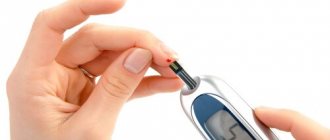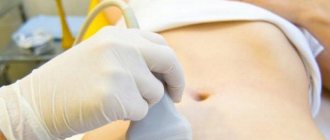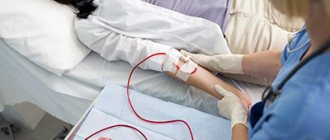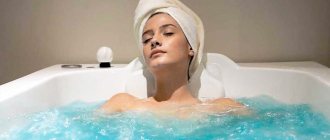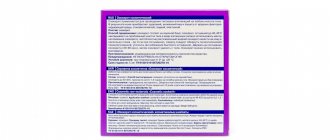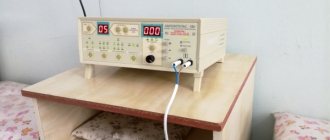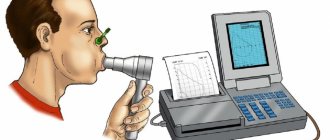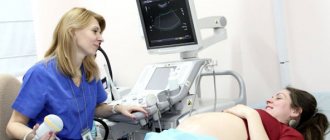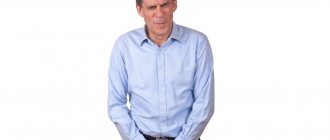Traditional treatment is not always able to help, because medications do not take into account the individual characteristics of the patient. The ideal option is to combine medications prescribed by a specialist with physiotherapeutic procedures, for example, balneotherapy. During such sessions, mineral water affects the patient externally or internally.
Using this method, many things are treated - from chronic diseases of the stomach, liver and biliary system to neurological and gynecological diseases. Moreover, balneotherapy allows you not only to get rid of ailments, but also to prevent their occurrence.
Balneotherapy
Balneotherapy is a spa procedure in which the patient is exposed to the power of mineral waters and healing mud. This method allows you to take into account the individual characteristics of a person as much as possible and can be prescribed even for psychological problems.
The procedure is used as the main type of treatment. Thanks to the unique mineral compositions, the regeneration of damaged organs is significantly increased and their work is actively launched. Balneotherapy is an effective way to prevent diseases, so you need to visit a sanatorium at least once a year. This will significantly reduce the risk of chronic diseases in adulthood.
On the territory of the Ural sanatorium there are its own natural sources of mineral water, as well as mud and brine from Lake Podbornoe. This allows you to select the most effective program for the treatment or prevention of a wide range of diseases in ten profiles - from ailments of the gastrointestinal tract to diseases of the genitourinary system.
How did balneotherapy appear?
Balneotherapy originated back in 700–600. BC BC, when the ancient Greeks, Egyptians and Romans decided to use mineral water to treat patients with particularly severe cases. Man has been instinctively drawn to hot baths since the dawn of mankind, but only in mature civilizations were people able to improve the procedure.
Literally translated, “balneotherapy” translates as “the study of bathing.” At first, however, the name of the procedure referred only to taking a healing bath. They began to take mineral water internally much later.
The ancient Romans were famous for their baths, which were mainly located near “healing” places: thermal and mineral springs, peat mud, salt water. And in Ancient Greece, the sick had to enter a spring near the temple in order to receive permission to visit the priests. Only after this did treatment begin. After some time, a cause-and-effect relationship became established in people’s minds: bathing in sacred waters helps subsequent healing.
It was Hippocrates who first stated that warm baths help with pneumonia, and cold water can relieve body pain. Later, using the example of a patient’s recovery from itchy skin, he spoke about the healing properties of mineral water. This knowledge passed through the centuries, losing and regaining popularity, until the procedure was finally established during the Renaissance. Michel Montaigne ensured her fame in wide circles: this writer had urolithiasis, so he traveled for a long time to Italian resorts and sanatoriums, trying to overcome the disease with the help of mineral water.
In the 18th century, experts paid much more attention to developing strict contraindications, and already from the 19th century, balneotherapy was increasingly prescribed by European doctors. Often this was the only way to get the patient back on his feet, since not all drugs were effective.
Rules for taking water procedures
To get the maximum effect without harming your health, you need to adhere to certain rules:
- spend no more than 20 minutes under running water;
- carry out water procedures no earlier than an hour after eating;
- It is better to take relaxing baths before bed, and tonic baths in the morning;
- It is better to take a contrast shower, varying the water temperature;
- Use only high-quality detergents. After water procedures, be sure to moisturize the skin;
- the skin will become younger and softer if you use scrubs and thick peels. They should be applied only to a damp body with light circular movements;
- In summer, the contrast shower is completed with heating, and in winter, the body is cooled. The body develops resistance to any climatic conditions.
Balneotherapy and related procedures
There are several types of balneotherapy:
- external – being in water or in therapeutic mud;
- intracavitary - washing with mineral waters from the inside;
- drinking cure.
The procedure is useful because it does not work just once. The more sessions were done, the more positively the body reacts. Thanks to systemic therapy, you can not only be cured, but also protected from diseases that are common, for example, to older people. Changes occur down to the cellular and molecular level - the body is completely rebooted.
Moreover, metabolism improves, and the level of susceptibility to stress decreases.
At the Ural sanatorium, balneotherapy is used to combat diseases:
- gastrointestinal tract;
- musculoskeletal system;
- respiratory organs;
- genitourinary, endocrine, immune systems;
- skin and blood circulation.
Drinking balneotherapy is one of the main types of therapy, so its importance cannot be underestimated. But mineral water cannot be drunk just like that - it is a full-fledged procedure that has a beneficial effect on the body when used correctly. Depending on the disease, water is taken in courses several times a year.
In the Ural sanatorium, the varieties “Uralochka - 41” and “Uralochka” are used for drinking - directly from the source in the sanatorium or bottled degassed at home.
Mineral waters have a positive effect on the cardiovascular system not only directly, but also sedatively: the composition eliminates the effects of stress and restores performance.
THERMS
In other words, baths or thermal (hot) baths. The therapeutic effect is based on the effect of heat on the body, which stimulates sweating processes. This cleanses the skin pores and improves blood flow. In addition, inhaling hot air has a beneficial effect on the respiratory system. Thermal baths can be combined with aromatherapy and a contrast shower or swimming pool. Changing exposure to heat to exposure to cold pool water has a positive effect on the human nervous system and increases tone.
Baths for balneotherapy procedures
Baths are the most common method of balneotherapy. In this case, the patient is affected by the intensity of the procedure, temperature conditions, and the composition of the water.
The mechanism of action is quite simple: due to the high concentration of carbon dioxide, blood flow to internal organs improves, heart rate and sensitivity to temperature changes decrease, and the exchange of oxygen and substances accelerates. Carbon dioxide is evenly distributed over the skin, and it absorbs it.
There are these types of mineral baths:
- general – have a complex effect on the body, since the body is completely submerged under water;
- local - prescribed locally for the arms and legs if the general procedure is contraindicated.
The listed types are considered the most universal, but often specialists adapt them to a specific patient and his disease. Baths are distinguished by fillers (pine needles, sage, lavender) and the composition of mineral waters. Thus, chloride waters mainly have a positive effect on the skin due to the high concentration of salts, while iodine bromide waters mainly affect the cardiovascular system and the thyroid gland. To improve metabolism, iodine baths are prescribed; they additionally affect the nervous system.
A contrast bath, for example, has recently become increasingly popular. During this procedure, the patient is exposed to temperature changes. Mainly used for diseases of the lower extremities, arthritis, varicose veins.
Patients are often prescribed supplements in the form of essential oils, algae and salts. In this case, the main criterion is not a pleasant aroma, but efficiency: natural ingredients, chosen correctly, immediately affect the source of the disease. Thanks to a systematic approach and a properly developed course of therapy, you can get rid of the problem in a fairly short period of time, while resting both your soul and body.
When selecting plants for herbal baths, the individual characteristics of the patient are first taken into account. The components should not only relieve stress, but also enhance blood circulation and metabolism, and serve as an additional step during complex therapy. The location of the resort plays an important role: for example, the Ural sanatorium is located on the territory of a natural monument 90 km from the urban environment. Therefore, the natural factor here especially influences the human healing process.
Authors):
Associate Professor V.K. Milkamanovich
Medical institution:
Belarusian State University Hydro- and thermotherapeutic procedures are based on temperature, mechanical and chemical influences. They cause local reactive changes, reactions in distant areas, as well as general reactions of the body.
The reflex effect of hydrotherapy procedures was noted by S.P. Botkin in his clinical lectures (1884): “Water treatment has become very widespread, and in fact, it is an excellent method, no matter whether it acts by removing heat or in another way. By changing blood circulation in the skin or on nerve endings, influencing through these devices the organs that secrete the products of reverse metamorphosis (metamorphosis).”
The possibility of influencing a number of functions of internal organs, the blood supply to the skull, face and brain through temperature and mechanical irritation of the skin around the neck, upper back and chest (the so-called Shcherbak collar method) has long been known.
By applying thermal and mechanical stimulation with a belt around the pelvis and on the thighs in the form of “panties,” it is possible to detect changes in blood circulation in the pelvic organs and thus influence the course of painful deep-lying processes.
Physical thermoregulation under the influence of hydrotherapy is manifested in the fact that with any cooling of the skin in the first phase of the reaction, the vessels narrow and the blood flow to it decreases, and the transfer of heat by the skin surface is also weakened. When warming up, on the contrary, the vessels dilate, blood flow increases, which entails increased heat transfer.
It should be noted that the initial phase of the action of hot baths—constriction of peripheral blood vessels—is short-lived and is quickly replaced by vasodilation. This transition has a regulatory effect on heart rate, respiration and metabolism.
When the body cools down, increased heat production immediately begins in it. The main role in this is played by processes developing in skeletal muscle tissue, liver and thyroid gland. Impulses arising under the influence of cold from the skin and under the influence of cooled blood reaching the centers involved in thermoregulation excite responses, as a result of which the production of adrenaline by the adrenal glands and thyrotoxin by the thyroid gland increases. Under the influence of these hormones entering the blood, tissue metabolism increases. First of all, enhanced combustion of nitrogen-free substances begins. However, with very strong exposure to cold and in case of insufficiency of nitrogen-free substances, it can even lead to the breakdown of protein substances. Therefore, hardening procedures for weakened people and especially children should be strictly limited and performed under strict medical supervision. Sometimes heat generation increases so much that ultimately there is even excess heat and the body temperature rises. This explains the feeling of warmth that arises in people who engage in winter swimming.
As for the local effects of heat and cold, it must be borne in mind that heat, heating the underlying tissue by contact, causes expansion of not only superficial, but also deep vessels. It should also be noted that the heating of the tissue cannot penetrate far inside, since the blood carries away the heat. Cold, on the contrary, causes contraction of blood vessels and thereby causes local and rather deep ischemia, which facilitates its penetration inside.
The next constant factor affecting most hydrotherapy procedures is mechanical irritation. In some hydrotherapy methods this irritation is an integral part (of the soul), in others it can be introduced to varying degrees.
Hydrostatic pressure has an effect when swimming in the sea, swimming pool, or immersing the body in a bath. When using baths, it is usually calculated within 20–30 cm of water column. Although this pressure is insignificant, it nevertheless has to be taken into account, especially when prescribing baths for patients with cardiovascular disorders, since baths affect blood distribution. The pressure of a column of water on the surface of the body can increase the work of the heart by slightly compressing the peripheral veins and affecting the abdominal area. Therefore, full baths with chest immersion under water are not recommended for people with heart problems. However, such immersion in patients with chronic obstructive bronchitis or emphysema affects the excursion of the chest, facilitating the act of exhalation.
Mechanical irritation plays an important role in shower treatment. So, for example, despite the low temperature of the water used, dilation of the skin vessels occurs already during the shower itself, and the sooner the stronger the pressure of the water jet. So, with a good hydromassage, the skin almost immediately becomes pink, and a feeling of warmth and lightness appears.
Physiological effect of hydro procedures on the body
Leather. The primary organ that receives irritation during hydrotherapy, as with most physiotherapeutic interventions, is the skin, which is a very complex organ with extremely important functions for the body. The skin has a richly developed vascular system; its dilated capillaries can accommodate about 30% of all blood circulating in the body. It contains a very large number of nerve endings. Thanks to this, through skin irritations, a wide variety of reactions can be obtained from organs remote from the site of application of the irritation.
The study of reflex mechanisms in the vital functions of the body and their use for medicinal purposes is the most important task in hydrotherapy and physiotherapy in general.
The skin contains sweat glands; by stimulating their functions, it is possible to influence the increase in sweating and at the same time the removal of various harmful products from the body, and enhance water metabolism in tissues.
Many facts indicate a close connection between the skin and the endocrine glands and the production of nonspecific immune bodies.
The cardiovascular system. As already noted, first there is a short-term narrowing of the blood vessels, and then their expansion. The effect of thermal irritation on vessels is not limited only to the place of application, but extends both to vessels located in the immediate vicinity and to vessels located at a distance.
So, for example, when using local thermal procedures (foot or hand bath), in addition to clearly expressed hyperemia of the limb, vasodilation occurs, although to a lesser extent.
With increased flow and flow of blood, a number of unpleasant phenomena are often observed that indicate a disorder of cerebral circulation: changes in facial coloring, heaviness in the head, dizziness, tinnitus, flickering in the eyes, headache, etc. Also, these symptoms are characteristic of people with increased blood pressure or noticeable vascular changes.
Irritation of certain areas of the skin can affect the state of blood circulation of the corresponding internal organs located quite far from the site of irritation. A hot or cold foot bath has a particularly strong effect on the blood supply to the brain, a manual one - on the chest organs, a sedentary one - on the abdominal and pelvic organs.
Thus, the skin-vascular reaction is the body’s response to the effects of hydroprocedures. When using certain hydrotherapeutic procedures, the effect occurs not only on the skin vessels, but simultaneously on all organs and systems.
Local application of cold on the heart (ice on the heart area) causes a decrease in the number of heart contractions and increases their strength. There is a better filling of the pulse and an increase in blood pressure. Cold tones the heart muscle.
The use of heat, on the contrary, always increases the number of heart beats, and with moderate exposure it also tones the muscle; with a significant increase in temperature (over 39 ° C) or with longer exposure, a decrease in the tone of the cardiac muscles and even expansion of the heart occurs.
It follows from this that we must carefully monitor the reactions of the heart when exposed to local heat or cold - the heart’s response occurs even before the vessels deep in the tissues warm up.
The reactions of the heart to the use of general cold baths or thermal procedures resemble reactions to the action of local procedures, but are complicated by the fact that the effect that these procedures will have on the peripheral vascular system will also be reflected on the heart.
So, for example, general baths at an indifferent temperature, almost without causing thermal irritation, should have no effect on either the blood vessels or the heart. But they change the filling of peripheral and abdominal vessels with blood due to the pressure of the water column, and also affect the respiratory movements of the chest - obviously, they affect blood circulation in general and the heart in particular. Some people cannot tolerate a full bath, immersion of the entire torso up to the neck, and can only take one in which the chest remains free. With greater immersion, unpleasant sensations from the heart begin. This is observed in very sensitive patients or those suffering from a weak heart.
When using baths with temperatures above and below the indifferent temperature, changes occur in blood circulation in healthy people: when cool, the pulse slows down, blood pressure increases; when warm - increased heart rate, drop in blood pressure. But if the bath temperature is above 39 ° C, the pressure begins to rise.
Thus, cool hydrotherapy procedures are a stimulant for cardiac activity. The heart has to work with dilated peripheral vessels, moreover, with their tone weakened, to maintain the necessary pressure.
The use of shower procedures turns out to be more complicated, since a reflex effect is also added. However, with hydromassage, the normalization of blood pressure occurs more smoothly and imperceptibly.
Nervous system. Hydrotherapy has an equally significant effect on the nervous system. Pain in the hand can be reduced not only by applying ice to the affected area, but also by lowering the elbow into cold water. Local application of heat also has a certain effect, similar to cold: with short-term use, sensitivity increases, with prolonged use it decreases, with more abrupt use it is almost completely suppressed.
Knowledge of reflex pathways and mechanisms for the vital activity of the body and its individual systems can be used for the purpose of therapeutic effects on individual organs by applying irritation to the surface of the body.
For example, a well-known method of bringing a fainted person back to consciousness by splashing his face with cold water is based on reflex action using cold stimulation through the reflex arc connecting the trigeminal nerve with the vagus nerve. Pouring the chest causes the so-called breathing reflex. Pouring the back of the head brings severe patients to consciousness, slows down and deepens breathing, raises blood pressure, and improves pulse. Hot foot baths cause a rush of blood to the pelvic organs and contraction of the uterus. The overall effect is even more pronounced if the impact of thermal irritations extends over a large surface of the body.
Heat treatments significantly reduce irritation. The calming effect is especially evident when taking general baths at a temperature 1–2 °C above the indifferent temperature. Hot short-term baths (about 40 ° C, duration - 1-2 minutes), on the contrary, excite. The effect of cold exposure is similar to the effect of adrenaline.
Correctly structured cold procedures first give a feeling of cold, and then a feeling of warming, vigor, and freshness. With excessive doses (very low temperature, long duration), unpleasant sensations may appear, including fainting. If cold procedures are used frequently, overirritation of the nervous system may occur (insomnia, increased irritability).
Thermal procedures initially give a pleasant feeling of warmth, and then fatigue, relaxation, causing a desire for peace, sleep, and rest. As the temperature of the procedure increases, the feeling of lethargy and weakness increases, but gradually increasing excitement also appears, despite significant general weakness and a pronounced feeling of fatigue.
Muscular system. Short-term local exposure to cold increases muscle excitability, increases muscle strength and reduces fatigue, especially if this exposure is accompanied by mechanical irritation. Warm and especially hot, but short-term procedures increase the functional ability of muscles, have a strengthening effect on them and reduce the feeling of fatigue. If you apply mechanical force, the effect will become even more pronounced.
Hydrotherapy also affects smooth muscles. Thus, with the help of thermal procedures with soft hydromassage, you can relieve the condition of spasm in the intestines. Hydromassage helps eliminate irregularities in the venous walls, helping to get rid of varicose veins.
Respiratory system. The influence of thermal irritations on the respiratory organs is very significant, which is proven primarily by the so-called respiratory reflex.
With sudden exposure to cold, both general and local, especially on the back of the head or chest, an extended inhalation occurs, followed by a series of deep breathing movements. With further exposure to cold, breathing becomes more rapid, but at the same time deeper.
With short-term mild irritation by heat, the same thing happens as with cold. However, with longer irritation, although rapid, but more shallow breathing is noted. Warm procedures, especially long ones (wet wraps), cause slow breathing.
Metabolism. There is a close relationship between the intensity of basal metabolic processes and body temperature. With an increase in body temperature and a simultaneous increase in oxidative processes, the basal metabolism also increases; a decrease in tissue temperature reduces it.
Thermal procedures of moderate intensity can cause a decrease in metabolism, but when the dose is increased and mechanical action is added, significant combustion of carbohydrates and fats is observed.
Secretory functions. Hydro- and thermotherapeutic procedures have a significant impact on secretory functions, and their effect on the sweat glands and kidneys is especially important.
Sweating under the influence of thermal procedures, depending on the dose of heat and the properties of the body, can increase sharply, so that the amount of sweat released during one procedure reaches 1–2 liters, and sometimes more. With sweat, a number of metabolic products are released, the absorption of liquid exudates and transudates increases, and dense deposits are absorbed. Therefore, sweating is of great importance for therapeutic applications.
With the effects usually used in hydrotherapy, the total daily urine output remains constant. Only long (1–2 hours) warm and lukewarm baths increase the daily amount of urine, and the secretory function of the kidneys increases, which is due to their improved blood supply.
Methodological aspects of hydrotherapy procedures
The healing effect of water is due to its temperature, mechanical and chemical influence. Based on the thermal effects of water, there are cold procedures (below 20 °C), cool (20–33 °C), indifferent or indifferent (34–36 °C), and hot (over 40 °C).
Pouring . Can be local or general. For general douches, 2–3 buckets of water are poured slowly over 1–2 minutes, so that the water flows evenly over the body (Fig. 1), then the patient’s skin is vigorously rubbed with a warm sheet and wiped dry.
The procedure is carried out daily for 4–6 weeks, gradually lowering the water temperature from 33–34 °C to 20–22 °C. General dousing increases tone, has a stimulating effect on the central nervous system, and enhances metabolism. In partial douches, usually with cold water (16–20 °C), only part of the body is doused: the back of the head - in order to improve breathing and blood circulation; arms and legs – with excessive sweating, varicose veins, etc.
Rubdowns . During general wiping, a naked patient standing in a basin of warm water is wrapped in a sheet soaked in water and wrung out well (Fig. 2).
The temperature of the water in the pelvis is gradually reduced from 30–32 °C to 18–20 °C by the end of the course of treatment. The patient is quickly and vigorously rubbed over a damp sheet for 2-3 minutes until a feeling of warmth is felt, then wiped with a dry sheet. Sometimes, after wiping, the patient is doused with 1–2 buckets of water, the temperature of which is 1–2 °C lower than the temperature of the water taken for wiping, then wiped dry (wiping with dousing). The patient can carry out the procedure independently, wiping the entire body with a sponge soaked in water or a special mitten, and then rubbing it dry with a towel.
Weakened patients are given partial wiping. For a patient lying in bed under a blanket, first one leg is opened, then the other, arms, back, etc., on which a towel moistened with water and wrung out is placed and thoroughly rubbed over it, and then wiped dry and covered with a blanket again (Fig. .2). Table salt, alcohol, and cologne are sometimes added to the water. This rubdown has a refreshing and tonic effect, improves blood circulation and increases metabolic rate.
Wraps. For wet wraps, lay out a large blanket on the couch and on top of it a sheet moistened with water (temperature 25–30 °C, rarely lower) and wrung out well. The naked patient is wrapped first in a sheet and then in a blanket (Fig. 3).
Depending on the duration, the procedure can have an antipyretic (10–15 min), sedative (30–40 min) and diaphoretic (50–60 min or more) effect.
Souls. Charcot shower (Fig. 4). A sick person standing at a distance of 3–3.5 m from the control panel is first doused with a fan stream of water from all sides (fan shower), then a compact stream is applied to parts of the body with muscle layers or a bone base (limbs, back, lateral surfaces of the chest cells).
It is necessary to avoid getting the jet into the face, head, mammary glands and genitals. The first procedure is carried out at a water temperature of 32–35 °C, daily or every other time it is lowered by 1 °C and by the end of treatment it is brought to 15–20 °C. Charcot's shower is prescribed mainly for functional diseases of the nervous system, metabolic diseases, especially obesity.
Scottish shower. A stream of hot (37–45 °C) water is alternately directed at the patient for 30–40 s, and then cold (10–20 °C) for 15–20 s. Repeat 4–6 times. As a local procedure, it is prescribed for obesity, constipation associated with decreased intestinal tone (on the abdomen), myositis of the lumbar muscles, and lumbosacral radiculitis (on the lower back).
A circular shower (Fig. 5) has a significant irritating effect on the nerve endings of the skin. The water temperature at the beginning of the course of treatment is usually 34–36 °C, and by the end of the course it is gradually reduced to 25 °C.
Underwater shower-massage (Fig. 6). The patient is massaged underwater with a stream of water supplied from a pressurized hose.
Temperature and mechanical irritation of the skin causes improved blood and lymph circulation, and thereby tissue nutrition, stimulates metabolism, and promotes faster resorption of inflammation. Indications: obesity, gout, consequences of trauma to the musculoskeletal system, diseases of the joints (except tuberculosis), muscles and tendons, consequences of injuries and diseases of the peripheral nervous system, residual effects after polio with symptoms of muscle paresis, sluggishly healing trophic ulcers (without thrombophlebitis) etc. During a general underwater shower-massage, the whole body is exposed. During local massage, a stream of water from a hose with a tip is directed to a certain area of the body (joint area, lumbar region, etc.), the water temperature is 36–38 °C. With a general underwater shower-massage, the water temperature can be gradually increased to 40 °C, with a local massage - up to 42 °C. The course of treatment is 15–20 procedures. General underwater massage cannot be combined with other water and thermal procedures, ultraviolet irradiation, etc.
Showers as hydrotherapy procedures are contraindicated in acute inflammatory processes and exacerbation of chronic diseases, arterial hypertension of the 2nd and 3rd degrees, severe angina pectoris, myocardial infarction, cardiac aneurysm, chronic cardiovascular failure, condition after a recent stroke (6–8 months ), malignant neoplasms, benign tumors with their tendency to grow, bleeding, tuberculosis in certain phases of the disease, infectious diseases, weeping eczema, pustular skin diseases, etc.
R.
Baths. You can use baths for medicinal purposes only as prescribed by a doctor and according to the method proposed by him. The effect of hot, cool water and steam on the body is controlled by medical staff. Usually a Russian bath with a steam room (Fig. 7) and a dry-air Finnish sauna (Fig. 8) are used. The effect of a bath on the body is based on temperature contrast (warming in a thermal chamber - steam room and subsequent cooling in a pool, under a shower or in a cool room). Indications: nonspecific diseases of the upper respiratory tract, musculoskeletal system (beyond the acute stage), initial manifestations of arterial hypertension, atherosclerosis, consequences of injuries to the lower extremities, exudative diathesis, etc. Contraindications are epilepsy, malignant and benign (growing) tumors, infectious diseases, severe hypertension and atherosclerosis, bleeding, blood diseases.
Baths. Based on the volume of impact, they are distinguished:
general (full), when the whole body is immersed in water up to the level of the neck (Fig. 9);
waist, or half-baths, in which only the lower half of the body is immersed;
local (partial) – for limbs.
Pine baths are prepared by adding powdered (50–70 g) or liquid (100 ml) pine extract. The industry also produces pine tablets, which are added to the bath (1-2 tablets each). The aroma of pine needles has a calming effect; such baths are especially indicated for neuroses. Water temperature – 35–37 °C, procedure duration – 10–15 minutes. The course consists of 10–15 procedures.
Sage baths are prepared by dissolving condensed clary sage condensate (250–300 ml) in water. These baths have an analgesic and calming effect and are used for diseases of the musculoskeletal and nervous systems. Water temperature – 35–37 °C, duration – 8–15 minutes, 2–3 times a week. The course consists of 12–15 procedures.
Mustard baths can be local or general. For a bath, use 150–250 g of dry mustard, previously diluted in a small amount of warm water. Mustard baths cause irritation and redness of the skin; they are prescribed for acute respiratory diseases, diseases and injuries of the musculoskeletal system. Water temperature – 37–39 °C. The duration of a general bath is 5–8 minutes, a local bath is 10 minutes. After the bath, the patient is washed with warm water and wrapped for 30–60 minutes.
Pearl baths. The acting medium is water with many air bubbles formed by thin metal tubes with holes into which air enters under pressure. This “seething” of water has a mechanical effect on the skin of a sick person. The air is not supplied evenly, but cyclically: 30 s – air supply, 30 s – rest. Water temperature – 35–37 °C. Baths are indicated for functional disorders of the nervous system, general fatigue, and arterial hypertension of the 1st degree. The duration of the procedure is 10–15 minutes, daily or every other day. The course consists of 12–15 procedures.
Artificial carbon dioxide baths. The influencing medium is natural or artificially prepared carbon dioxide mineral waters. The body is covered with many small gas bubbles, which have a chemical effect on the nerve receptors of the skin, which leads to a reflex relaxation of the capillaries and arterioles located in it.
The first procedures are carried out at a water temperature of 35–37 °C. By the 4th–5th session, this parameter is reduced to 32 °C. The duration of the procedure is 7–15 minutes, every other day. The course consists of 12–15 baths. The next course is prescribed no earlier than 3 months later.
Artificial radon baths. To prepare them, a concentrated radon solution is used, which is obtained from a solution of radium salts: 200 liters of fresh water (temperature - 34–36 ° C) are mixed with 100 ml of a concentrated radon mineral solution in accordance with the instructions. Radon baths enhance metabolic processes, have a general calming and analgesic effect, normalize blood pressure, and improve the contractile function of the heart. Indicated for chronic polyarthritis, spinal osteochondrosis, neuroses, diseases of the peripheral nervous system, and gynecological diseases. The course consists of 10–15 baths. The next course is repeated after 6–12 months.
Oxygen baths are prepared using an apparatus for saturating water with oxygen. In addition to the usual sedative effect of fresh, temperature-indifferent water, oxygen bubbles have a slight mechanical effect, like air bubbles in a pearl bath. Oxygen concentration does not exceed 50 mg/l. Water temperature – 35–36 °C, duration – 10–20 minutes, daily or every other day. The course consists of 12–15 procedures.
As an example, let us give a set of water procedures used for obesity .
A bath with sea or rock salt accelerates metabolic processes, helps open pores and remove excess fluid from the body, and effectively fights cellulite.
A bath with soda - makes the skin elastic, due to the alkaline reaction it eliminates dryness and softens the skin, giving it a well-groomed, toned appearance.
Baths with essential oils soothe and relieve skin irritation, promote the activation of metabolic processes and active fat burning. Essential oils of grapefruit, orange and juniper perfectly cope with the external manifestations of cellulite and lumpy skin.
Turpentine baths are more of a therapeutic measure than just a weight loss procedure. Such baths must be used in accordance with the instructions and strictly according to the recommended scheme.
You need to stay in the bath for at least 15 minutes, but the heart area should not be immersed in water. At home, you need to take a three-week course of fat-burning baths, they need to be done every 2 days.
If possible, it is useful to visit the bathhouse once a week. In the bathhouse, it is recommended to cleanse the skin using various peelings.
References
- Milkamanovich V.K. Caring for seriously ill people in home and hospital care: a manual for advanced training and retraining of social work specialists, social workers of social service institutions. – Minsk, 2017. – 200 p.
- Ponomarenko G. N. General physiotherapy: textbook / G. N. Ponomarenko, V. S. Ulashchik. – St. Petersburg, 2011. – 288 p.
- Smychek V. B. Rehabilitation of sick and disabled people. – M., 2009. – 560 p.
- Sokolova N. G. Physiotherapy: a textbook for students of educational institutions of secondary vocational education / N. G. Sokolova, T. V. Sokolova. – 4th ed. – Rostov-on-Don, 2008. – 314 p.
- Physical and rehabilitation medicine: national guide / ed. G. N. Ponomarenko. – M., 2021. – 688 p.
Balneotherapy with shower
External balneotherapy is carried out not only with baths, but also with showers. There are such varieties:
- local - used locally for ailments of the scalp and neuroses;
- ascending – help in the treatment of problems of the genitourinary system, gynecological diseases;
- massage – a combination of the effects of a general bath and a therapeutic shower. Temperature, mechanics of application, and chemical composition of water are taken into account.
They have a targeted effect, so they can more effectively fight some specific diseases - for example, dandruff or neuralgia. Doctors often combine baths with showers for a more comprehensive therapy.
THERAPEUTIC POOL
There are two types of therapeutic pool: open (outdoors) and indoor (indoors). It is filled with either sea water or water with mineral salts dissolved in it. The purpose of the pool is to conduct various types of therapeutic gymnastic exercises (aqua fitness), underwater spinal traction (traction therapy), etc.
Contraindications
At the Ural sanatorium there are no age restrictions for undergoing balneotherapy procedures. But there are other contraindications that you need to pay attention to:
- oncology – in the active phase, remission and 5 years after completion of treatment;
- diseases of an inflammatory and infectious nature - especially in acute form;
- fungal infection, bleeding;
- tuberculosis;
- some types of cardiovascular diseases - for example, angina pectoris, hypertension, recent heart attack or stroke;
- renal, liver, heart failure;
- some neurological diseases - for example, epilepsy;
- pregnancy (from the second trimester).
During a mandatory consultation with a staff specialist, you will be able to choose the most suitable therapy program for yourself.
How does balneotherapy work?
The result of balneotherapy depends on several factors. Firstly, the method of exposure is always taken into account - external, intracavitary or drinking. Secondly, the patient is always influenced by a certain composition of minerals. For example, in the Ural sanatorium, among the ingredients are sodium, magnesium, bicarbonates, chlorides and iron in large quantities. This mix relieves ailments of the gastrointestinal tract, metabolic diseases, and helps cope with allergies and iron deficiency anemia.
Temperature plays a significant role. For example, for diseases of the liver and biliary tract, take warm or hot mineral water - from thirty to fifty degrees Celsius.
For therapy to really help your body, follow simple rules. They can make your stay at the resort more enjoyable.
- Let your healthcare professional know about your emotional state after the procedure. Has anything changed? Which way? A professional will be able to adjust the course in the right direction if certain signs require it: your reaction to temperature conditions, mineral compositions and time spent in the water.
- You should not be tired after the session. Pleasant lightness and a feeling of rejuvenation are the right signals.
- Balneotherapy is a cumulative, systemic procedure, so you should not skip the baths or showers prescribed for you.
- Limit sessions during menstruation. Bleeding is considered a contraindication.
- Keep track of your therapy time. It usually lasts about 20–30 minutes and can be adjusted by your attending physicians, taking into account the individual characteristics of your body.
- The course may consist of 8–12 such procedures and be repeated several times a year. It is often carried out at home, but only by drinking, since it is dangerous to take health baths without the supervision of a specialist.
The result always depends on the chosen technique. Moreover, the procedure often affects not only the problematic organ, but also the entire body, therefore, to ensure effectiveness, balneotherapy must be supervised by specialists. Make sure that only professionals work in the chosen sanatorium. For example, like in the Ural sanatorium: here the team includes doctors of the highest category, doctors and candidates of science, thanks to whom your stay at the resort will bring real benefits to the body.

